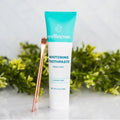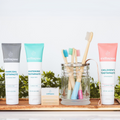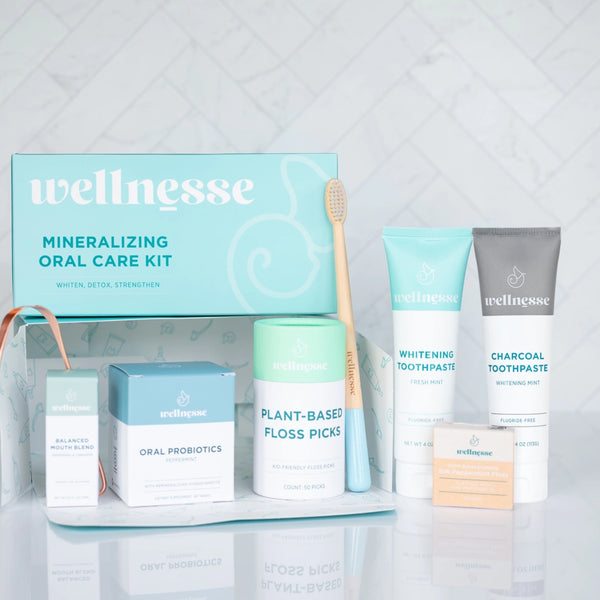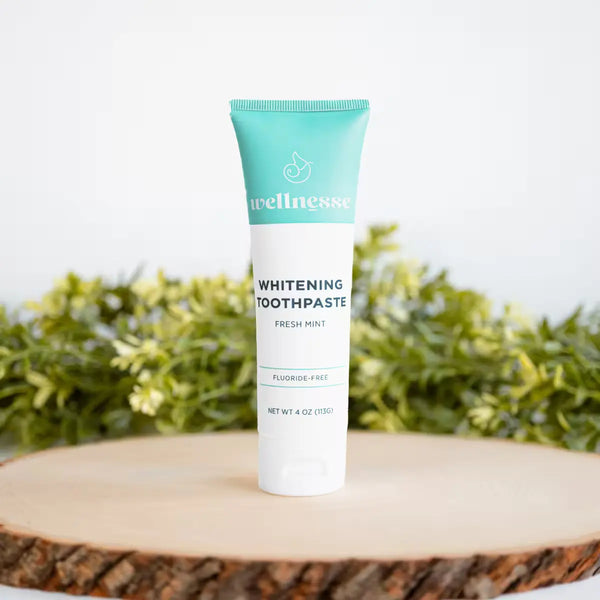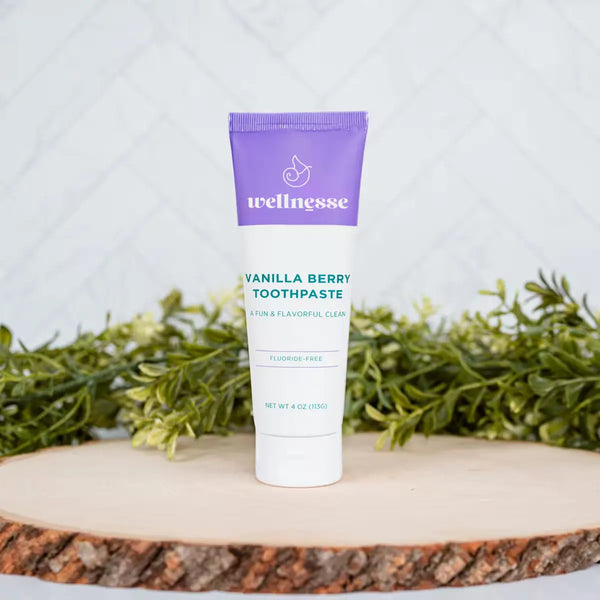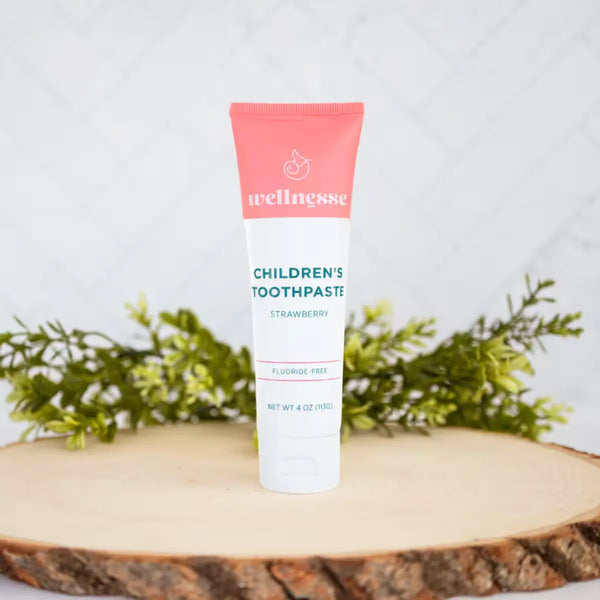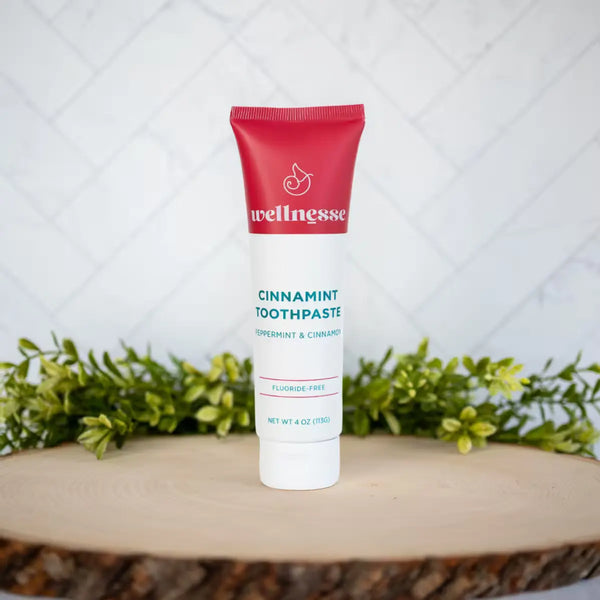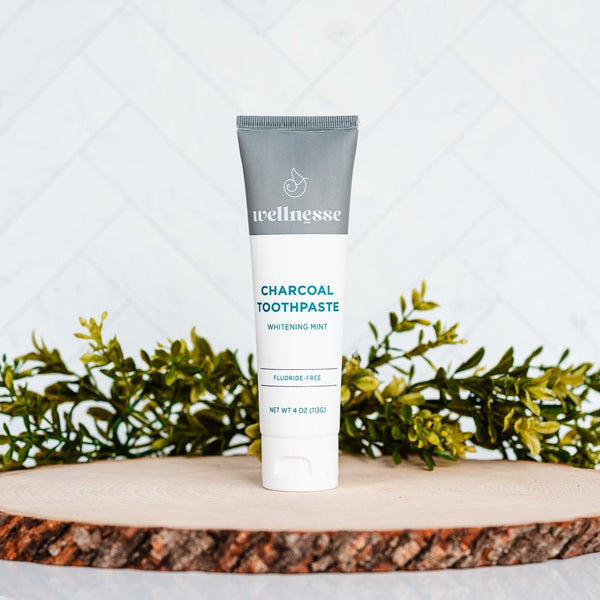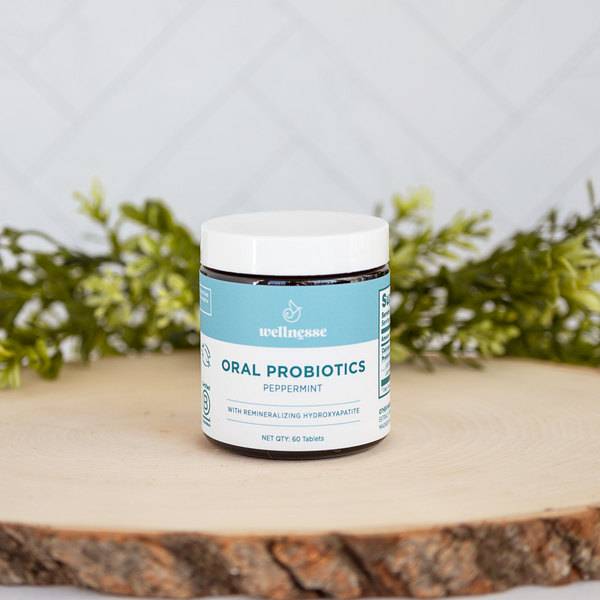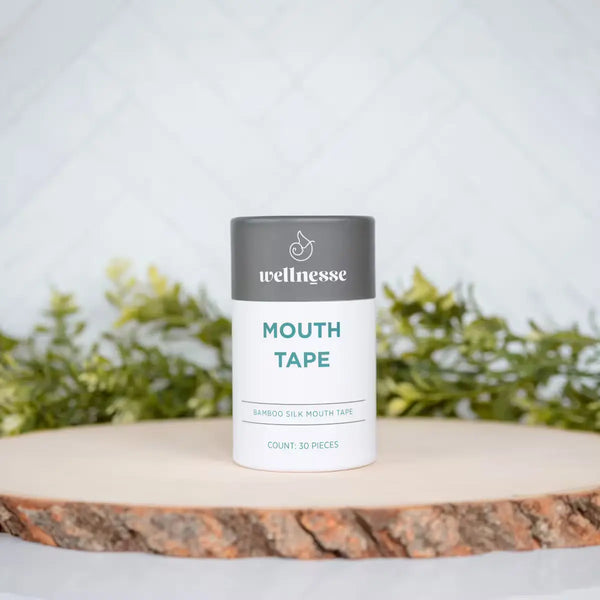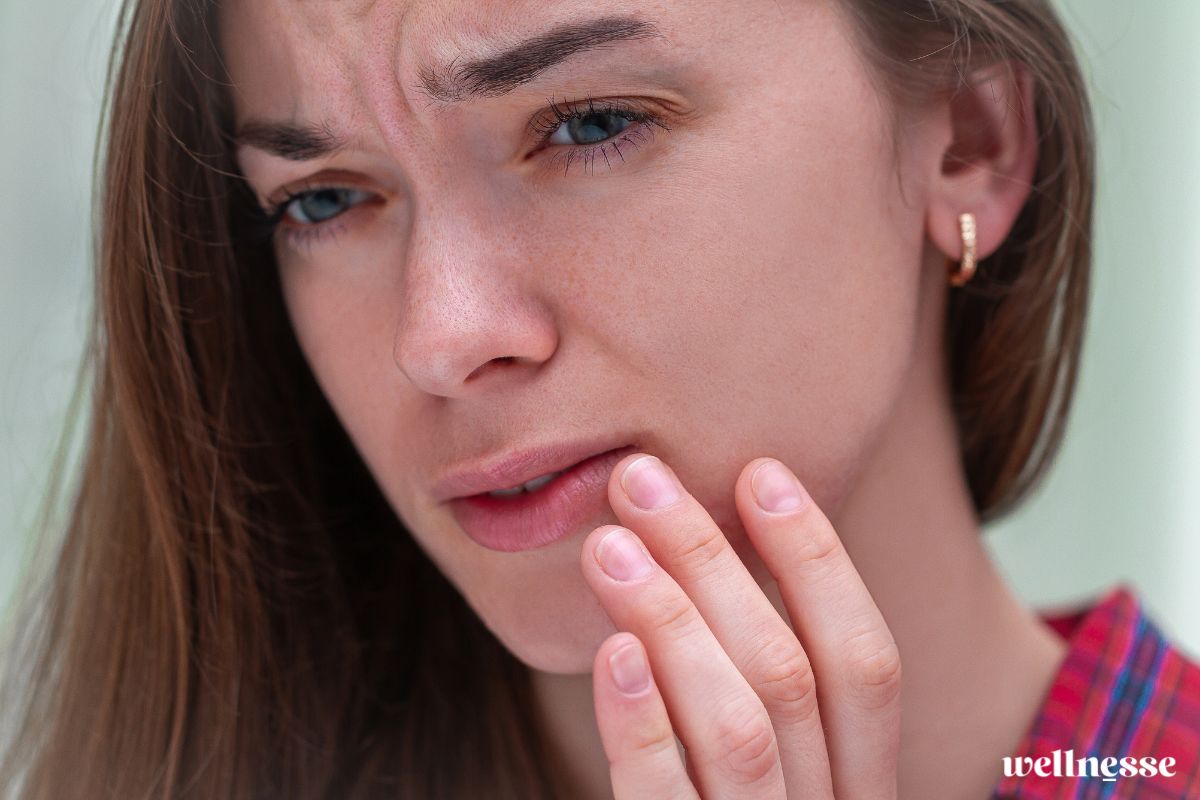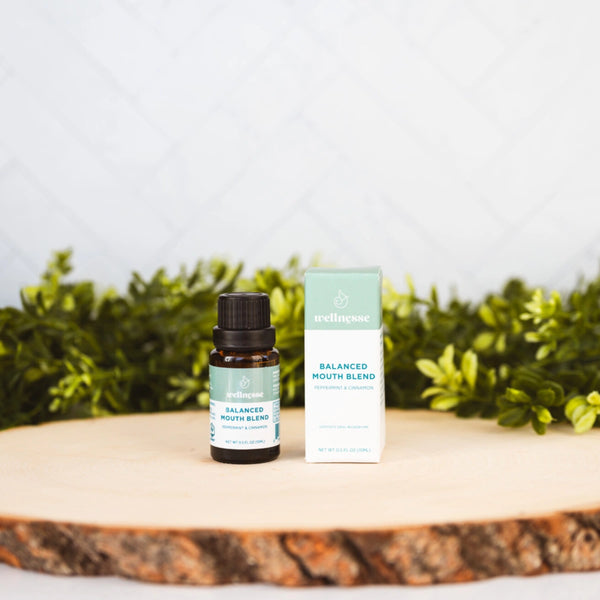If you’ve ever experienced the first tingle around your lips of a budding cold sore or noticed a strange, painful ulcer in your mouth, you know how uncomfortable these sores can be. Both canker sores and cold sores are frustrating and painful.
Although both of these sores crop up in the same location and aren’t fun to deal with, they’re more different than you might realize. Each has several remedies you can use to speed up healing and soothe pain. And even better, there are preventative things you can do to help keep these sores away.
What Is a Cold Sore?
Cold sores are painful, throbbing sores that can appear on or near your lips, nose, or mouth. Also known as fever blisters, they’re caused by the herpes simplex virus, HSV-1.
Cold sores are very common. In fact, between 50-80% of adults have the virus. Although they can be very uncomfortable, the virus is generally harmless. These sores appear as blisters and burn, tingle, or itch. They can take anywhere from a few days to several weeks to heal.
Since these sores are contagious, don’t share eating utensils, towels, or lip balms, and avoid kissing when you’re having an outbreak. And make sure to wash your hands before and after applying anything to the sore.
Cold sores are triggered by several things including:
- Stress
- Fatigue
- Hormonal changes
- Sun exposure
- Illness or weakened immune system
- Physical injury to the mouth area
Cold sores tend to flare up when the immune system is weakened. The sneaky herpes virus seizes the chance to replicate, which irritates your skin and causes those painful blisters.
The 4 Stages of Cold Sores
A cold sore breakout usually goes through four stages.
1. Tingling Stage
When a fever blister outbreak is starting, the first sign is usually a tingling or itching feeling around your lips or nose. You might not see much yet at this stage, other than a small red spot that can look like a pimple. However, this is a good time to start treating the symptoms (more on that below) because you can catch it before it’s a full-blown cold sore and possibly shorten the life cycle. Not everyone experiences this stage, though. Some people might just skip straight to stage 2.
2. Blister Stage
This is when the cold sore becomes very visible. Small clusters of fluid-filled blisters start forming on the lip area, usually along the edges of the lips. These blisters continue to grow for a day or two. This is also a time when the blisters can hurt or throb. It's important not to touch or pick at them as this can spread the virus and prolong healing time.
3. Oozing/Crusted Stage
Over the next 4-6 days, the blisters might ooze fluid, and they’ll develop an achy, crusty scab. They often become itchy, but again, resist the urge to touch them. This is the most contagious phase, so remember to avoid direct skin contact and don’t share personal items. Keep the area clean and dry to promote healing.
4. Healing Stage
Finally, the scab dries out. Again, while it can be tempting to hurry the blister away, resist the urge to mess with it. This will help your body heal more quickly. Soon, the scab will fall off, revealing healed skin beneath. And the breakout is over!
What is a Canker Sore?
Canker sores, on the other hand, are painful ulcers inside your mouth on the soft tissue. Unlike cold sores, they are not contagious. Researchers aren't entirely sure what causes canker sores.
These sores can be hard to heal because they’re in our mouths, and it's difficult to put products on them to help heal. Also, eating and drinking certain things can irritate them. And if you’ve ever had a canker sore and bit down on it while eating, you know how painful that is!
The canker sore starts as a small white or yellowish spot surrounded by inflamed tissue inside the mouth. There may be a tingling or burning sensation at first. Over the next few days, an ulcer forms with a white/yellow center and an erythematous (red) border. Since it’s swollen, it’s easier to bite it again, re-injuring the sore.
Some of the potential triggers for canker sores include:
- Tissue damage (biting cheek while eating)
- Stress
- Nutritional deficiencies
- Smoking
- Genetic predisposition
- Sodium Lauryl Sulfate (SLS) – an ingredient in many mainstream toothpastes
- Braces
Canker sores last 1-2 weeks. But the good news is you can't pass them along to anyone else!
Key Differences Between Cold Sores and Canker Sores
Although both of these sores affect our mouths, there are more differences between these sores than there are similarities.
- Appearance: Cold sores are clusters of blisters on or near the lips or mouth. Canker sores are ulcers inside the mouth.
- Cause: Cold sores are caused by the herpes virus while canker sores have no known single cause.
- Contagiousness: Cold sores are highly contagious, but canker sores are not.
- Duration: A typical cold sore breakout lasts 2-4 weeks. Canker sores usually heal faster, within 1-2 weeks.
Note: The best way to differentiate between cold and canker sores is to consult a medical professional, as both conditions have similar initial symptoms.
Cold Sore and Canker Sore Remedies
When mouth sores rear their ugly heads, you want relief as soon as possible. Although there are different remedies for both types of sores, there are several natural options you can use. Try some or all of them when you have a flare up, and find the ones that work best for you.
Cold Sore Treatments
Since cold sores come from a viral infection, treating them can be tricky. There’s no permanent cure, but thankfully you can manage the symptoms when they arise.
Here are some of our go-to home remedies for cold sore relief:
Lysine
Studies show this essential amino acid works against arginine, the amino acid that feeds the herpes virus. You can take 1,000 mg lysine daily preventively and up the dosage during a breakout. Or you can use it topically when you have a breakout.
Lemon Balm
Lemon balm extract applied on the sore several times daily can help ease swelling and pain. You can use diluted lemon balm essential oil (make sure to check out this article about essential oil use safety). Use a dilution ratio of 2-5 drops of oil to 1 oz of carrier oil to start with. Or you can make a tincture with lemon balm.
Licorice Root
Sipping licorice root tea may help deter the virus from replicating thanks to its antiviral and antibacterial properties. Plus, it tastes delicious!
Essential Oils
In addition to lemon balm essential oils, tea tree and peppermint oils can significantly inhibit the herpes virus. Again, you want to use them safely but properly dilute them before applying. The same ratio as above works best: 2-5 drops of essential oil to 1 oz of carrier oil to start. You can apply this several times a day.
Zinc Oxide
Mineral-rich zinc oxide protects the skin while also having mild antiviral activity. Limited studies show it may inhibit viral replication and reduce inflammation during an outbreak.
Black Tea Compress
The tannins in black tea can stop the spread of the herpes virus into the cells. To use this remedy, brew a cup of black tea (preferably organic) and place the tea bag on the sore for a few minutes.
Canker Sore Treatments
Since canker sores aren't viral or contagious, you have more flexibility with treatment options. Here are some of our favorite canker sore remedies:
Saltwater Rinse
Although this may be a little painful at first, salt is a natural disinfectant and will speed up the healing process while also relieving pain. Mix 1 tsp of Himalayan pink salt or sea salt in half a cup of warm water until it dissolves and swish for 30 seconds. Repeat several times a day.
Aloe Vera Juice
Pure aloe vera juice can help reduce throbbing discomfort. Swish it around for a few minutes 1-2 times daily for relief.
Coconut Oil
Oil pulling is an ancient detox practice that has been in the spotlight for the last few years for its benefits. It involves swishing oil in your mouth for 5-20 minutes and helps draw out toxins and coat the tender canker sore.
Chamomile
Thanks to chamomile’s anti-inflammatory properties of reducing pain and relaxing nerves, this herb is a great option for relieving canker sores. You can place a moist chamomile tea bag on the ulcer for 5-10 minutes for some pain relief or drink a cup of the tea. Another alternative is to make a chamomile tincture and swish it around in your mouth for a few minutes.
Sage and Myrrh
These anti-inflammatory herbs can relieve canker sore pain. Brew some sage tea and swish it around in your mouth. Or purchase sage or myrrh powder and make a mouthwash or a tincture.
Tips to Prevent Canker and Cold Sores in the First Place
Avoiding mouth sores in the first place is always the best bet! That way you don’t have to deal with pain, discomfort, and inflammation. Here are some tips to prevent these sores from even popping up.
Manage Stress
This is the most important piece when trying to avoid mouth sources. Higher stress levels put a strain on our immune system, which can trigger cold sores. The herpes virus stays dormant in nerve tissues, and when immunity is low, it gets triggered, causing an outbreak.
Stress relief techniques are a great way to help prevent mouth sores. Try things like breathing practices, exercise and movement, meditation, journaling, making time for hobbies you love, and enjoying rest and relaxation time with those you love. This can keep stress from building up and weakening your immune system.
Watch Your Diet
Your diet also plays a huge role in preventing mouth sores. A vitamin and nutrient-rich whole-food diet gives your body what it needs to fight pathogens and function at optimal levels. Anti-inflammatory omega-3s from foods like salmon, walnuts, and flax are great at building immunity, which will discourage cold sores. And a wide variety of fruits and vegetables gives your body important antioxidants, minerals, and amino acids, like lysine and zinc.
Occasional canker sores may also arise from vitamin deficiencies, so make sure you eat a wide variety of foods to combat any deficits. A balanced diet gives your body what it needs to stay healthy.
Avoid Things That Can Irritate Your Mouth
Avoiding irritants can also help you avoid canker sores and keep existing ones from getting worse. Certain acidic or spicy foods like citrus, tomatoes, and chilies can sting ulcerations, causing irritation and pain and slowing the healing process. Alcohol contains both acid and tissue-damaging ethanol. So it's best to avoid drinking when you have any sores.
Some toothpastes contain sodium lauryl sulfate (SLS), a detergent that can cause irritation and lead to canker sores. Switching to an SLS-free natural toothpaste without harsh additives protects your mouth. By avoiding this ingredient, you’re able to prevent canker sores.
Avoid Contact with Others Who Have Cold Sores
The best way to avoid fever blisters is to keep the virus out of your body. Avoid sharing drinks, eating utensils, towels, or lip products with anyone having an outbreak. The herpes virus spreads through direct contact, entering through breaks in our skin and mucous membranes. This makes it easy to transmit the virus through saliva on these personal products.
If you’re the one experiencing a breakout, remind your family and friends not to use your things until the cold sore heals. Also, avoid kissing during this time.
Key Takeaway
Now that you know all about canker sores and cold sores, you’ll know how to naturally treat those sores as they crop up. But the most important thing is to try to prevent the sores from happening in the first place. Minimize stress, eat a colorful, whole-food diet, and avoid irritants like toothpaste with SLS to keep your mouth happy and healthy!
And don't forget to check out our oral care line to keep your mouth healthy and happy!
